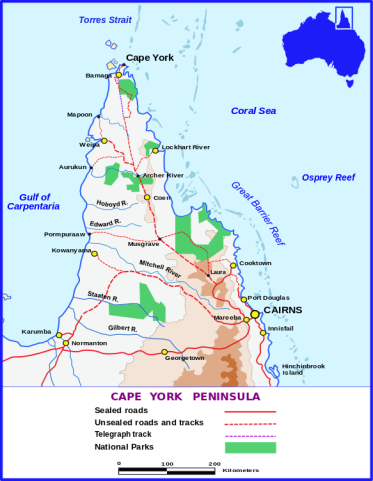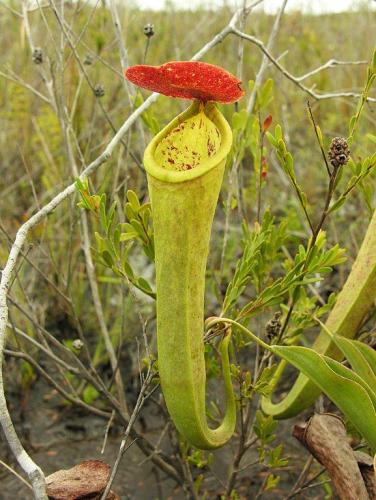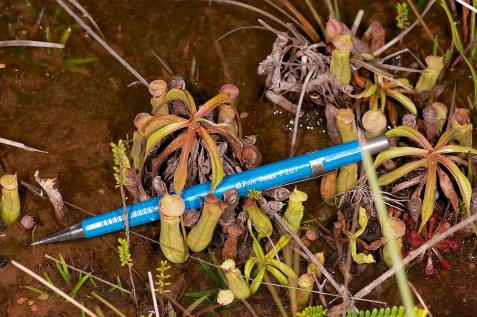
N. albolineata (1898) [1] = N. mirabilis
N. alicae (1898) – note the small stature [1] = N. mirabilis
N. armbrustae (1905) [1] = N. mirabilis
N. bernaysii (1881) [1] = N. mirabilis
N. cholmondeleyi (1900) – note the small stature [1] = N. mirabilis
N. garrawayae (1905) [1] = N. mirabilis
N. jardinei (1897) [1], [2] = N. mirabilis
N. moorei (1898) [1] = N. mirabilis
N. pascoensis (1905) [1] = N. mirabilis
N. rowaniae (1897) [1]
Plus von Mueller’s contribution:
N. kennedyana (1865) = N. mirabilis
made for a total of 11 endemic Australian Nepenthes; Nepenthes mirabilis brings the tally up to 12 (for a sense of scale, there are 13 species of Nepenthes in Sulawesi). In 1928, Danser’s monograph The Nepenthaceae of the Netherlands Indies synonymized all of these species with N. mirabilis (including N. rowaniae). Field work by Clarke and Kruger (2005) led to the reinstatement of N. rowaniae (which is now typically accepted) and the description of a new species, Nepenthes tenax; leading to what we generally accept today.



So what can we make of this “mini-tenax“? In my unqualified opinion, there certainly isn’t enough justification to separate Nepenthes parvula from N. tenax when taken in the larger context of Nepenthes taxonomy. Larger morphological differences haven’t led to such separation (e.g. N. mirabilis var. globosa — which was somewhat controversial too, as many called for its elevation to species status, but has never been contested). Can these cultivated specimens prove that N. parvula isn’t just a stunted, neotenic, or geographical form of N. tenax? Without further details from the authors, I’m highly skeptical of this new taxon. Furthermore, it would be interesting to see if the authors reviewed Bailey’s herbarium material, because two of his species, N. alicae and N. cholmondeleyi, appear to be very small forms of Cape York Nepenthes as well. Time will tell.

More photos of N. parvula in situ can be found here: link
